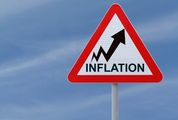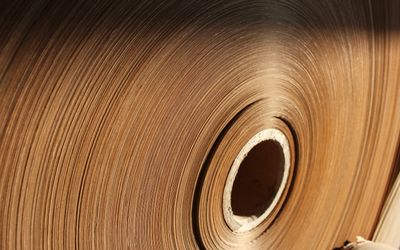MOODY’s outlook for the global paper and forest products industry is "stable", reflecting its expectation that operating income growth of the 46 paper companies it rates globally will be flat to modest over the next 12 to 18 months.
This should benefit both Mondi and Sappi. But Mondi is a far more focused international packaging group, while Sappi, through its large coated paper operations, is far more exposed to declining printing and writing paper markets worldwide as electronic communications grow.
"(The) secular decline in paper consumption will continue to weigh on paper producers. Our outlook for the paper sub-sector remains negative as we expect operating income for most producers will decline due to both declining demand and product prices," Moody’s says.
It says weaker prices across most grades will limit operating earnings growth. Many firms have diversified operations across many different sub-sectors and commodity grades.
However, it also says each sub-sector has its own fundamental trends, geographic considerations and supply-and-demand curves.
The operating earnings of 15 such companies rated by the international ratings agency were primarily driven by their paper-packaging and tissue operations, which represents more than 50% of global operating income. The outlook for this sub-sector is also stable, with most firms generating "flat to modestly stronger operating earnings" within the 0% to 2% growth range.

Moody’s forecasts modest economic growth of 1% to 2% for the euro area in 2016 and 2017, and says continuing weakness in the European currency should lift regional exports this calendar year. Euro weakness will apply particularly to markets where the commodity price is denominated in, or pegged to, the US dollar — such as the pulp market — as a strong dollar erodes the ability of US producers to sell globally.
"The consolidated operating income of the 28 North American companies that we rate will remain essentially flat, with 0%-2% growth over the outlook period.
"Demand for North American and European printing and writing grades of paper will decrease by approximately 4%-5% this year, as traditional consumers of paper turn to digital alternatives, such as tablets and e-readers," Moody’s says.
"Over the past eight years, average production for US uncoated freesheet, coated paper and newsprint declined by 4%, 5% and 9% per annum, respectively. We expect that future declines will continue at similar average rates."
But Moody’s also says that demand for paper in emerging markets will be flat, as substitution by electronic devices has been offset by higher paper consumption, due to higher literacy rates and better living standards. Meanwhile, increasing per capita paper use in Latin America will increase demand, although this will be offset by weaker economic growth, it says.
Justin Jordan, an equity analyst at Jefferies International in London, says Mondi stands to benefit from "overdone fears" in relation to kraftliner prices. He says the group’s anticipated €60m of capital investments in 2016, higher uncoated fine paper prices, and volume growth in boxes and plastic packaging augur well for profit growth.
Jefferies says Mondi generates 85% of operating profit in Europe and 15% in SA. A defining advantage over peers is that significant assets are in low-cost geographies — mainly central and eastern Europe and Russia. Mondi has a sector-leading 14% operating profit margin, along with a 20.5% return on capital employed.
Moody’s expects the consolidated operating income of the 11 European producers — which represent about 25% of the global rated industry’s operating income — to increase 0% to 2% over the outlook period.
"This reflects our expectation that increased operating earnings from rated packaging companies … will outweigh those from paper producers," Moody’s says.






















Change: -0.47%
Change: -0.57%
Change: -1.76%
Change: -0.34%
Change: 0.02%
Data supplied by Profile Data
Change: -1.40%
Change: -0.42%
Change: -0.47%
Change: 0.00%
Change: -0.47%
Data supplied by Profile Data
Change: 1.29%
Change: 1.53%
Change: 1.22%
Change: 1.10%
Change: 1.05%
Data supplied by Profile Data
Change: 0.04%
Change: -0.52%
Change: 0.20%
Change: -1.38%
Change: -2.05%
Data supplied by Profile Data